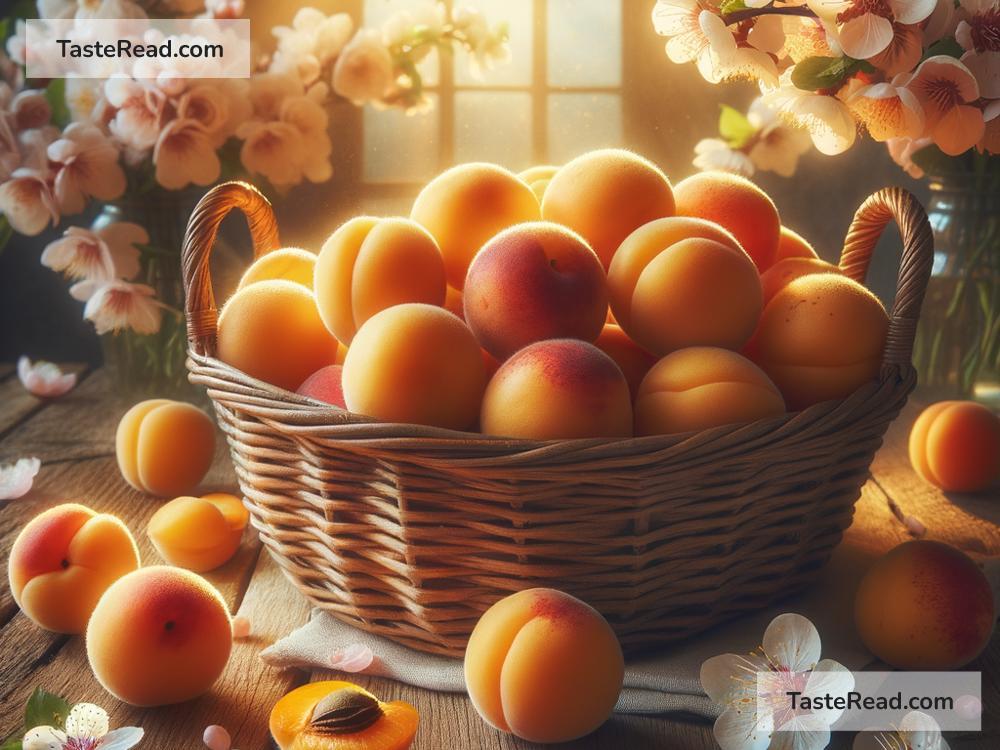Apricots and Hope: A Mythical Connection Worth Exploring
Apricots are small, golden-orange fruits known for their sweet and tangy flavor. Their smooth skin and juicy interiors make them a delight for our taste buds. But what if apricots were more than just food? What if they carried a deeper, mythical meaning, connecting them to hope and renewal? While these ideas may not be widely familiar today, apricots have been linked to hope in stories, symbolism, and traditions across cultures and time. Let’s take a closer look at this intriguing bond between apricots and hope.
The Sweet Symbolism of Apricots
Symbols have always played an important role in human storytelling and belief systems. Fruits, in particular, have often been used to represent emotions, values, and ideas. For example, apples are tied to knowledge and temptation, while pomegranates signify abundance and fertility. Apricots, with their golden hue, have often been connected to warmth, the sun, and possibilities.
In ancient cultures, apricots were believed to represent optimism and a fresh start. Their appearance in early spring, after a long and harsh winter, made them a symbol of hope for better days ahead. When apricot trees began to bloom, it was seen as nature’s way of promising renewal, growth, and prosperity. People would admire their blossoms as reminders that life can persevere and thrive, even after challenges.
Apricots in Myth and Legend
Several myths and legends feature apricots, often connecting them to hope and transformation. For instance, some say that apricot trees have been linked to the idea of resilience and second chances. Their ability to withstand severe weather conditions became a metaphor for overcoming struggles and hardships.
In Persian mythology, apricot trees were considered sacred in some regions. Their blossoms were seen as messengers of joy, and they symbolized the eternal cycle of life, showing that after every dark period, light would follow. There were stories of people planting apricot seeds in times of despair, believing that the trees would eventually grow and bring beauty and hope to future generations.
Similarly, in Chinese culture, apricots were seen as a spiritual fruit. Ancient Chinese healers often referred to apricots as a symbol of health and wellbeing. The fruit was believed to heal both the body and the soul, bringing hope to those struggling with illness or sadness. The apricot’s gentle flavor and bright color were thought to remind people of brighter tomorrows.
The Power of Golden Colors
Colors are essential in how we interpret symbols and emotions. The apricot’s golden-orange shade resembles the sun and its life-giving energy. Across cultures, the sun represents hope, warmth, and light after darkness. The visual connection between apricots and sunlight strengthens their association with optimism.
Imagine holding an apricot in your hand. Its gentle glow almost feels alive, like it carries a spark of hope within it. Eating an apricot can feel like absorbing a little bit of sunshine, filling you with joy and comfort. Perhaps this is why apricots were often used in celebrations and rituals that marked new beginnings or commemorated valuable moments.
Apricots as Gifts of Hope
In some traditions, apricots are exchanged as tokens of hope and goodwill. The act of gifting apricots communicates a message of encouragement and optimism. For example, in certain Middle Eastern cultures, dried apricots are shared during festivals and holidays to symbolize prosperity and wishes for a brighter future.
Similarly, apricot trees are sometimes planted as meaningful gestures. A blooming apricot tree can represent faith in the future, a reminder that beauty and growth will come, even after difficult times. This practice has been embraced by gardeners, communities, and environmentalists who view trees not only as plants but also as symbols of collective endurance and hope.
Modern Hope in Apricots
Today, apricots may not carry the same cultural weight as they did in ancient times, but their connection to hope persists in subtle ways. They are still appreciated for their nourishing qualities; eating apricots can be an act of self-care and wellness, reminding us to prioritize our health and happiness.
Apricot imagery also appears in art and literature, often symbolizing the promise of new beginnings. Whether it’s a painting of an apricot tree blooming in the background or a poem describing the sweetness of an apricot, this humble fruit continues to inspire sentiments of growth and possibility.
Even apricot skincare products can spark a feeling of renewal—softening skin and boosting confidence, much like the metaphorical renewal of hope that is tied to apricots.
Conclusion: A Humble Fruit with Big Meaning
Apricots might seem like simple fruits, but their mythical connection to hope reveals how even the smallest things can carry profound meaning. From their vibrant blossoms to their golden fruits, apricot trees have served as symbols of resilience, optimism, and renewal. Across myths and cultures, apricots remind us that life, like the tree’s cycle of growth, continues to flourish even after challenges.
The next time you eat an apricot or see an apricot tree, take a moment to reflect on its connection to hope. Just like the tree that grows its fruit with patience and care, we too can withstand life’s storms and look forward to brighter tomorrows. Whether in ancient myths or everyday life, apricots show us that hope is always waiting to bloom.

